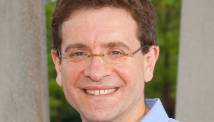SINGAPORE: Singapore's economic growth slowed significantly this year, as subdued external demand affected most sectors of the economy.
But findings from the Ministry of Finance's second issue of the Singapore Public Sector Outcomes Review (SPOR) showed that there has been real growth in household incomes over the past five years despite higher inflation.
Median monthly household incomes dipped in 2009 to S$4,850 with the economic downturn, although these remain higher than five years ago - S$4,267 in 2005.
Incomes have since risen in 2010 with the economic recovery and tighter labour market.
The review found that to keep incomes on a sustainable growth path, the skills and productivity of workers must be raised. If the goal of raising productivity by two to three per cent per year over the next decade is achieved, median real incomes should grow by about 30 per cent over 10 years.
Published once every two years, SPOR provides a perspective on how the public sector and Singapore have fared in six broad range of areas of national interest including growing incomes and fostering strong families and a cohesive society.
The review said immediate challenges remain but are being addressed and these include relieving pressure in public housing and transport infrastructure.
Beyond these, SPOR said the government must keep sight of long-term issues vital to Singapore's survival, security and success.
Public policy will also have to take into account a greater diversity of needs and interests as society evolves.
The current Our Singapore Conversation is an effort to involve many Singaporeans in gathering aspirations and hopes for Singapore's future, and ideas on how we can achieve them together.
- CNA/ck













